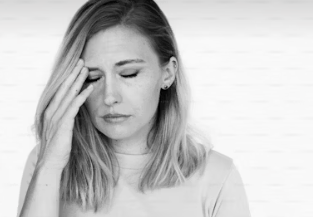Why does my hip keep hurting?
Published on
11 Feb 2021


Written by
Kate Senini
Consultant Physiotherapist
Call us on: (03) 9975 4133
Presentations of one sided hip pain are incredibly common in the predominantly city based adult population at Pure Physio. This presenting patient group often have several things in common - they are desk based corporate workers who spend many hours sitting both in the office and during their commutes. They are active people who enjoy running and cycling. They have often sought treatment or suffered intermittent ongoing pain for many years, that responds well to treatment for a short term but ultimately returns with increased exercise.
One of the most poorly diagnosed hip pathologies is called Hip Dysplasia. This is a condition where one is born with a shallow socket of the hip joint.
The ball of the hip (femoral head) is designed to sit deeply in a very supportive socket (the acetabulum) and then has extra reinforcement from a fibrous tissue called the labrum. In a normal hip this ensures that the joint is incredibly stable, and able to withstand high forces during dynamic activities.
Unfortunately in years gone by, hip dysplasia was poorly diagnosed. Often sufferers of mild hip dysplasia show no signs until late adolescence or early adulthood when they begin to experience increasing symptoms of groin pain or pain in the outer hip region.
Even so in the USA it takes a patient an average of 5 different health practitioner consultations to receive a correct diagnosis.
In our patient population there is good reason to consider that a diagnosis may have been missed. Often patients report they used to enjoy weight bearing sports and running. However they have switched to swimming or cycling because their hip pain would become significantly worse.
Due to the shallow socket, the muscular system around the hip has to work a lot harder to control the movement occurring at the hip. In particular the hip flexor muscles (iliopsoas) becomes tight and gripping, the abductor muscles (outer hip muscles) work to shorten and hold the ball in the socket, and often the lower back muscles become very tight as they aim to provide an extra level of stability.
If you are experiencing pain that can be temporarily relieved, but not permanently resolved, then a further assessment of other possible conditions is important. Hip dysplasia is diagnosed by a combination of Xray and MRI to assess the structure of the hip. This coupled with more specific patient questioning and movement tests will enable to complete diagnosis.
Hip dysplasia is not easy to treat in the sense that there is no surgical magic cure. Over time it can lead to early onset of arthritis in the joint which is the most common cause of hip replacements in those aged late 40s to early 50s.
What we as Physiotherapists can do to help is to work very specifically on fine tuned stability of the hip joint. There are key deep muscles called the deep hip rotators that control the way the ball is positioned within the socket. There are also deep abdominal and pelvic floor muscles that work to position the pelvis (and socket) optimally to aid the hip joint stability.
Postural retraining, ergonomic education, sports specific training and load prescription are all components of a conservative rehabilitation program. We also ensure we work closely with radiographers and hip specialists as needed.
If you are feeling that your hip just won’t “get better” then we would love to help you out.
About the Author
Kate Senini — Consultant Physiotherapist
Kate, who was a founding partner at Pure Physio in 2010, is now working exclusively in a clinical role. Helping people recover from injury and prevent future injuries has always been her true passion!


